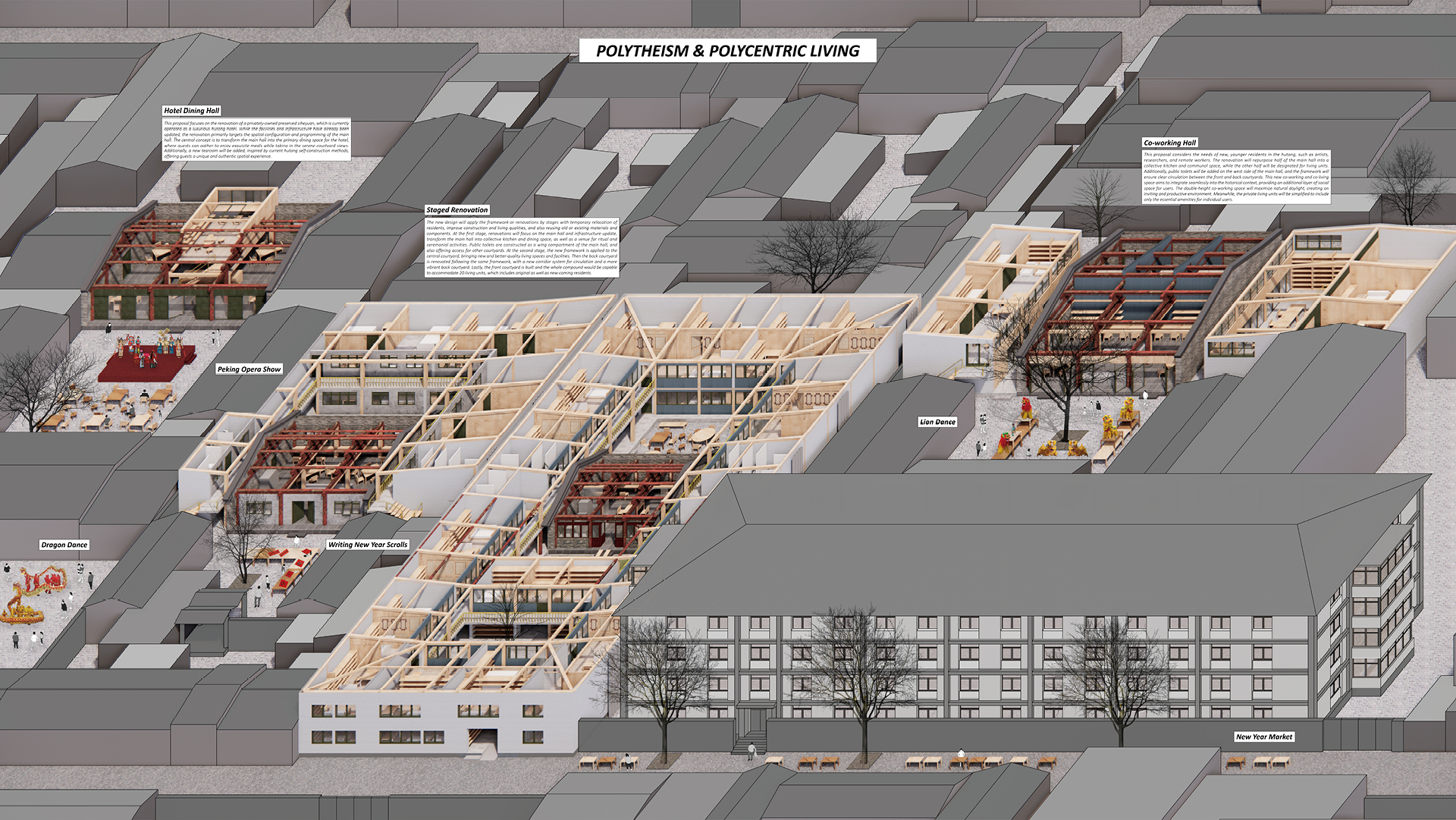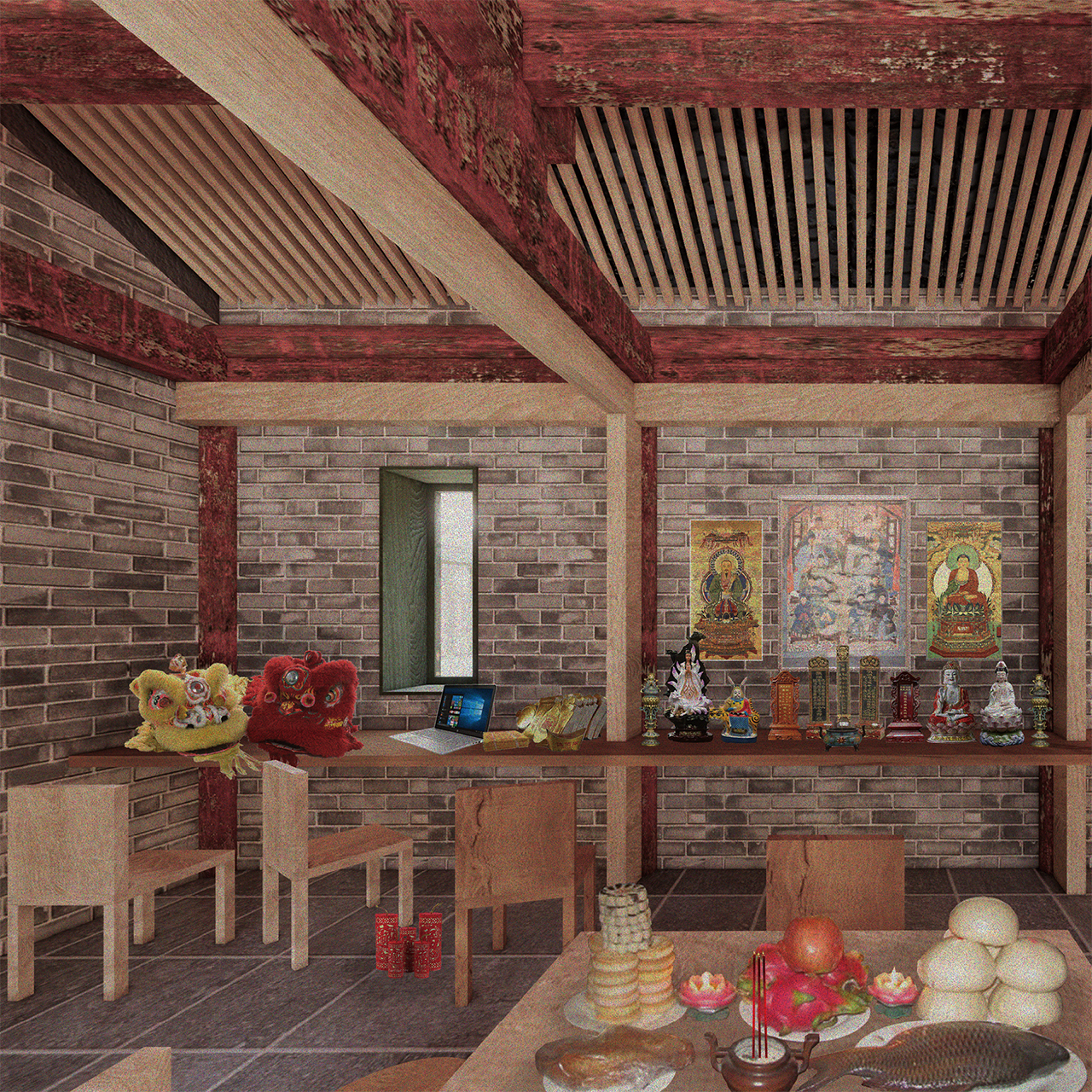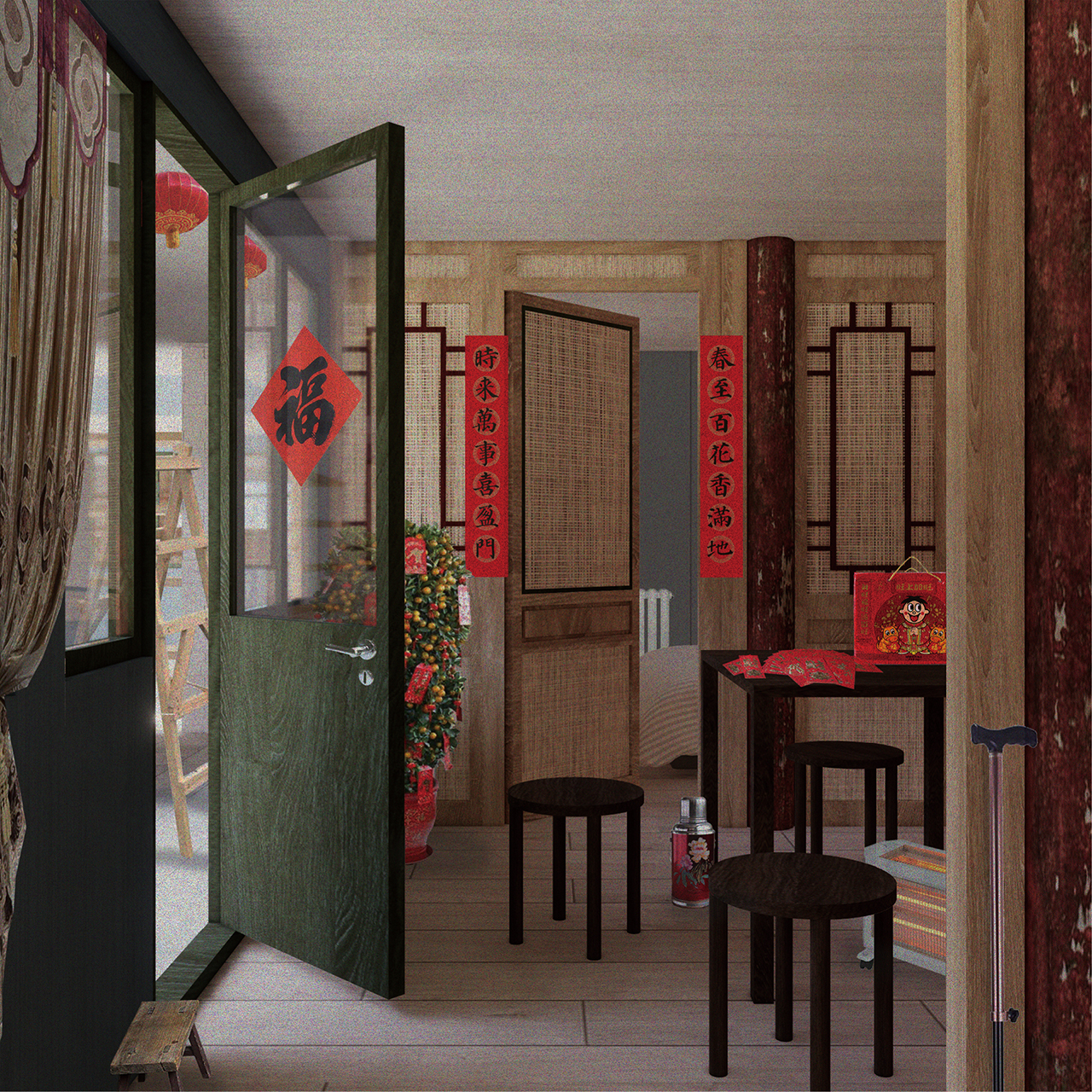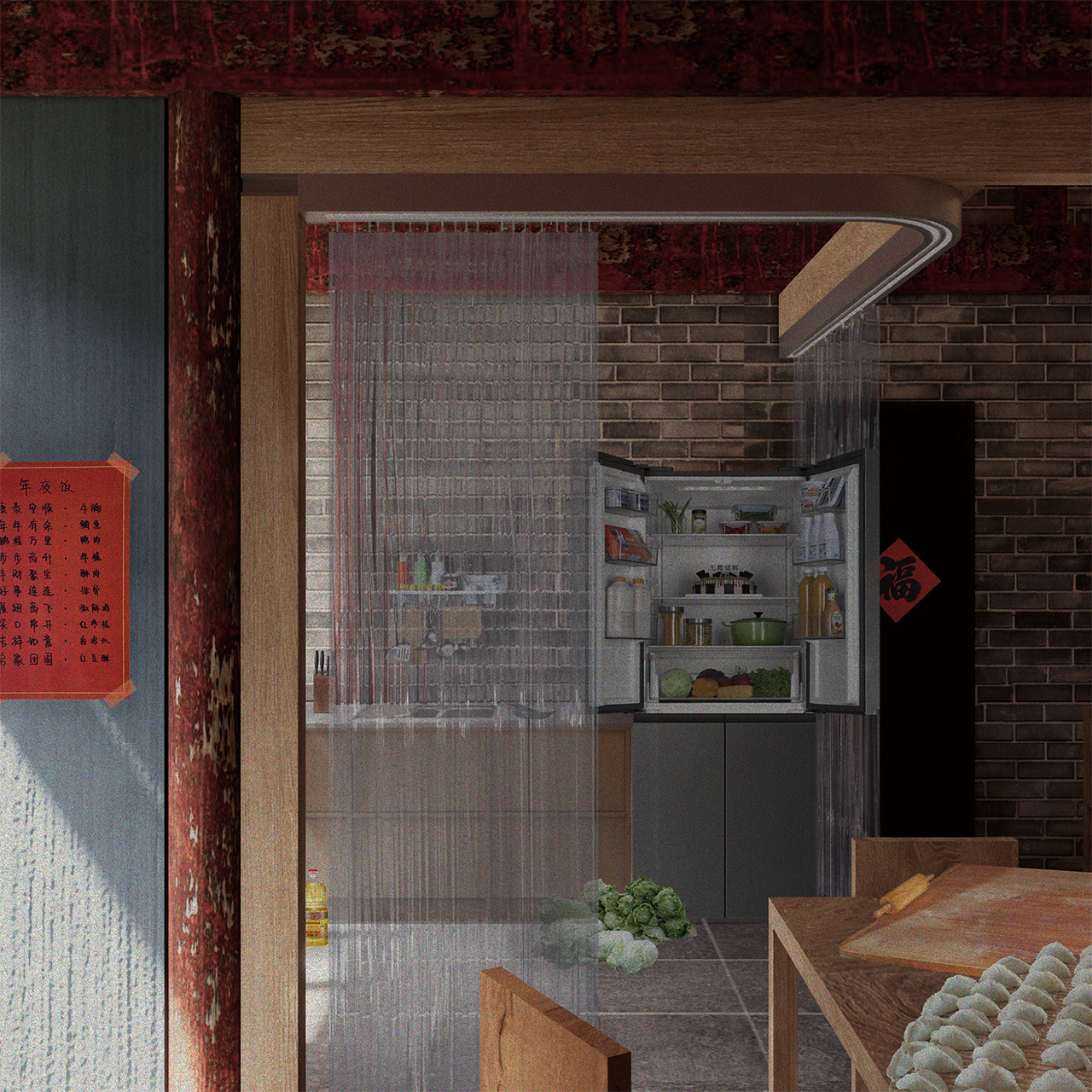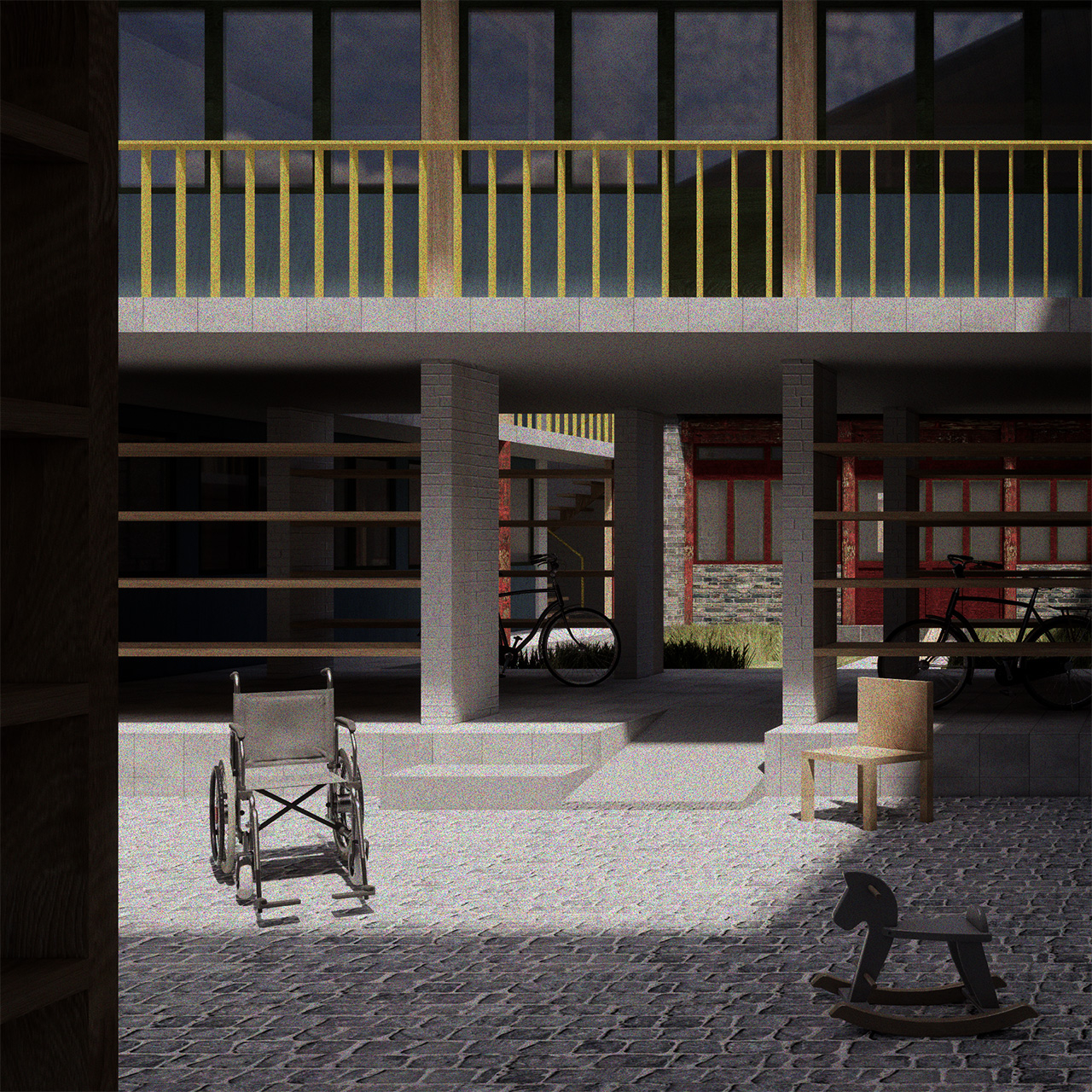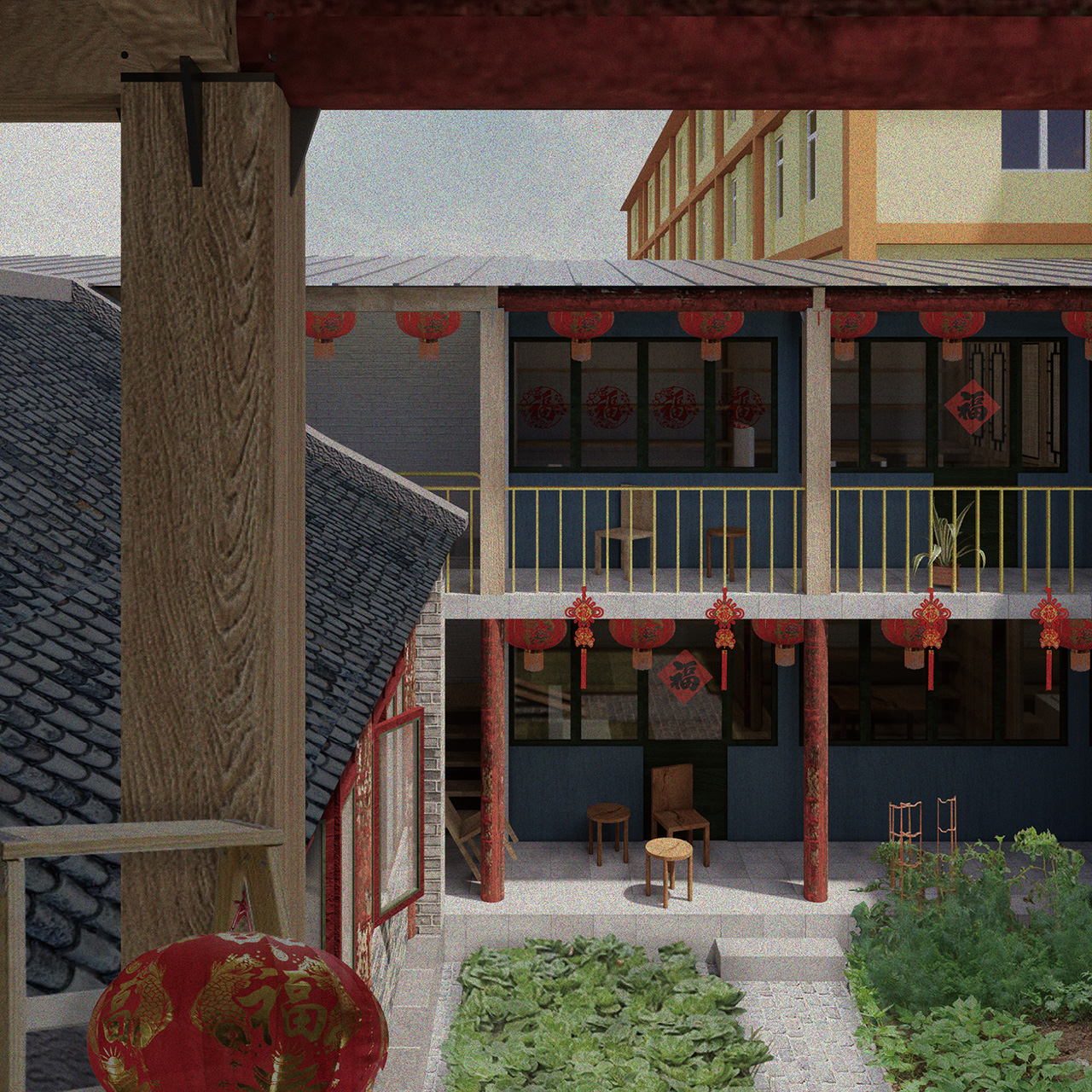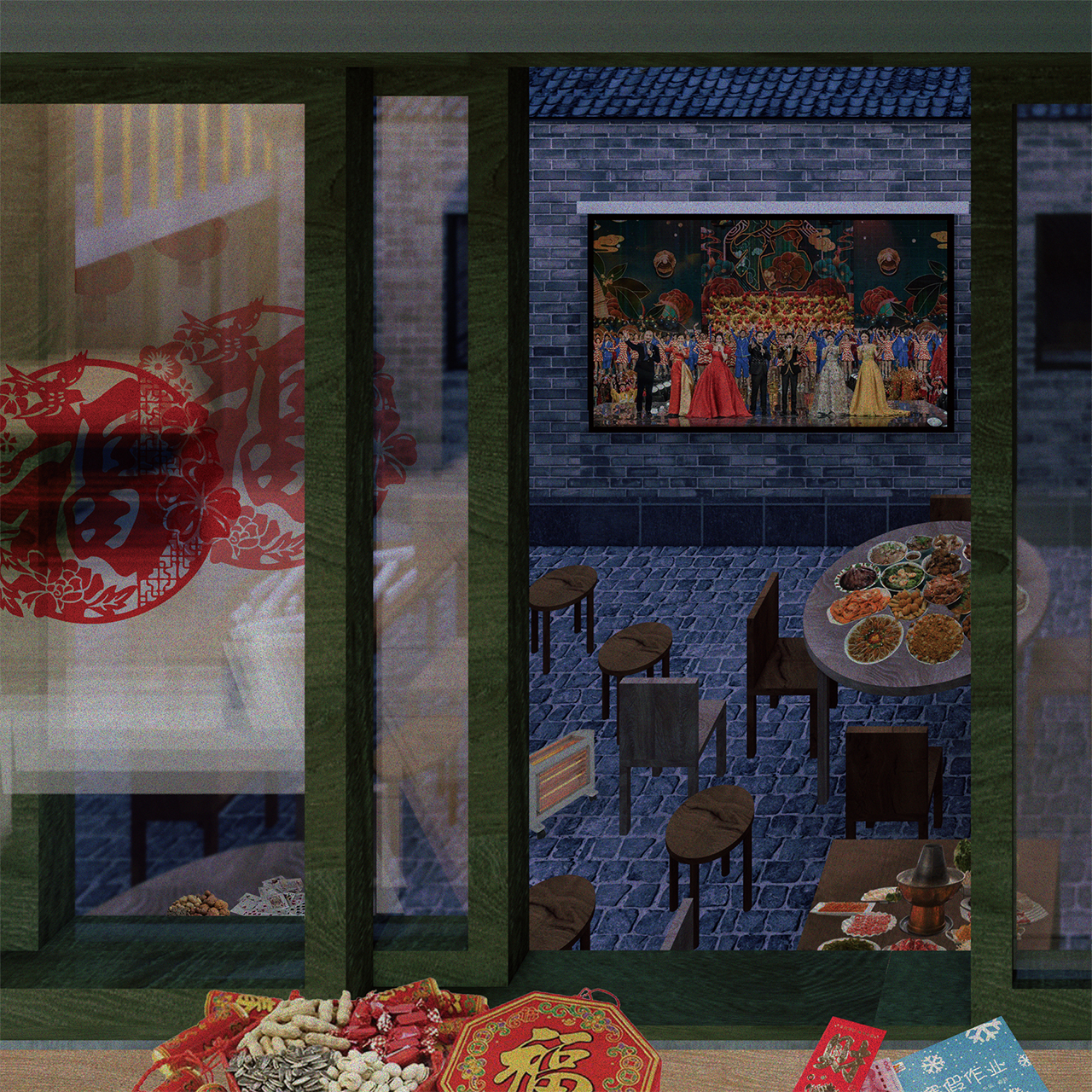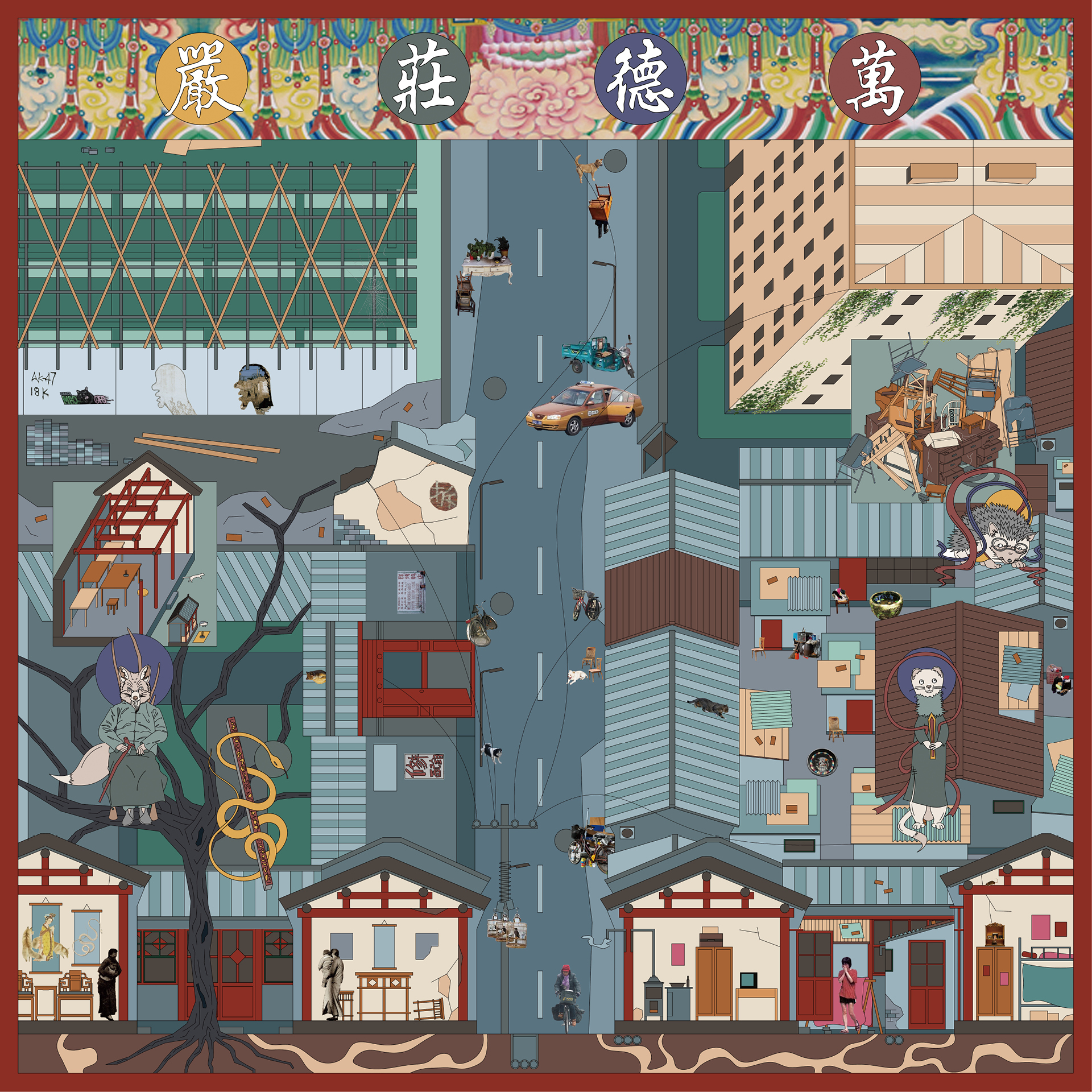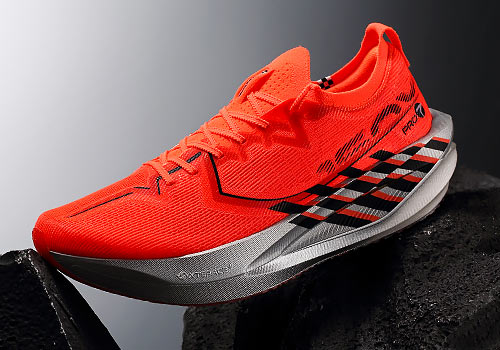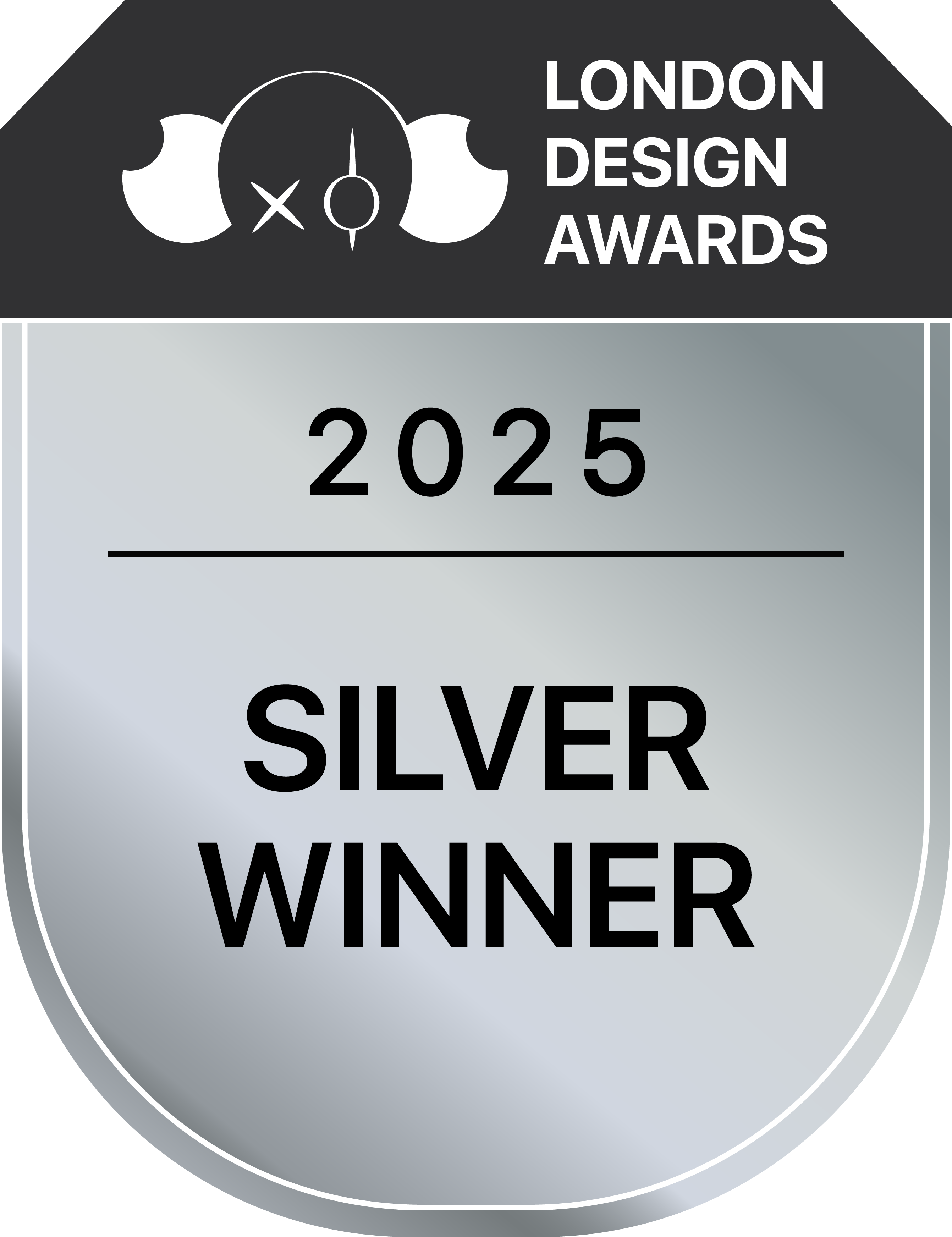
2025
Polytheism & Polycentric Living: Reimagining Beijing Hutong
Entrant Company
Ruqing Lyu
Category
Architectural Design - Conceptual
Client's Name
Country / Region
China
This project delves into the disappearance of traditional elements in modern Beijing, focusing on the hutong and siheyuan typologies, as well as the Szu Ta-men, a representative of ritual folklore. The traditional domestic unit, siheyuan, embodied a spatial hierarchy centered around ancestor worship, reflecting Chinese feudal ethics. The city planning also held a network of religious spaces catering to diverse religions and beliefs, being vital public spaces for different hutong communities. Szu Ta-men, once a prominent folk belief in this diverse belief system, worshipped four sacred animals – fox, weasel, hedgehog, and snake – and played a significant role in people’s everyday life.
During the 20th century, the spatial order of siheyuan and hutong was disrupted by social turbulence and regime changes, transforming siheyuan into dazayuan under collectivism and socialist ideology. The later demolition era turned these historical elements into complex configurations of uses and appearances, with original residents relocated to distant suburbs. Folk beliefs, especially Szu Ta-men, were strictly prohibited by the state. The fading of these beliefs and the reduction of religious spaces followed, with many sites either repurposed or preserved as heritage without their original functions.
In envisioning the future, I argued that religious beliefs, as integral contributors to local cultures, need to be preserved and emphasized for their richness in life experiences and collective contributions. This project aims for an ecology of belief, practice, and space, integrating Szu Ta-men and other rituals within hutong communities. The innovative spatialization of religious practices would draw inspiration from morphological studies of previous religious spaces in Szu Ta-men, with applications tailored to the spatial hierarchy within hutong – private living spaces, courtyards and pathways, street sides and designated public spaces, juxtaposing religious practices and everyday practices.
Credits
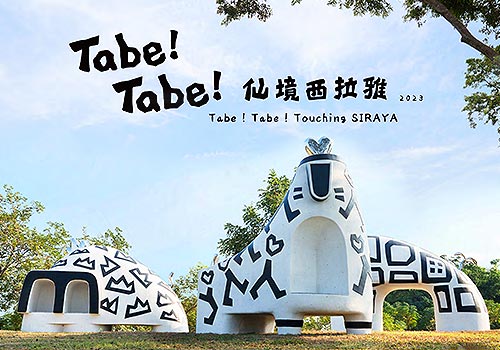
Entrant Company
Siraya National Scenic Area Headquarters
Category
Landscape Design - Sculpture Design

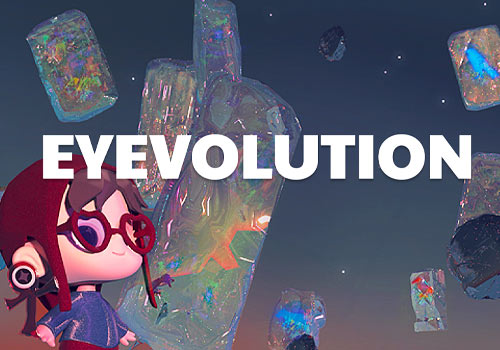
Entrant Company
Yifei Mao / Xingyu Liu / Jingnan Zhang
Category
Conceptual Design - Amblyopia Correction Game

